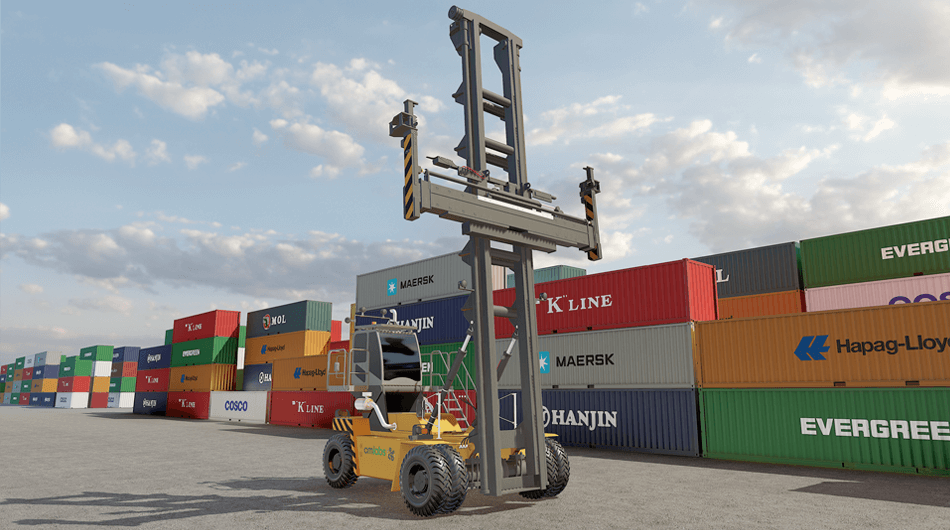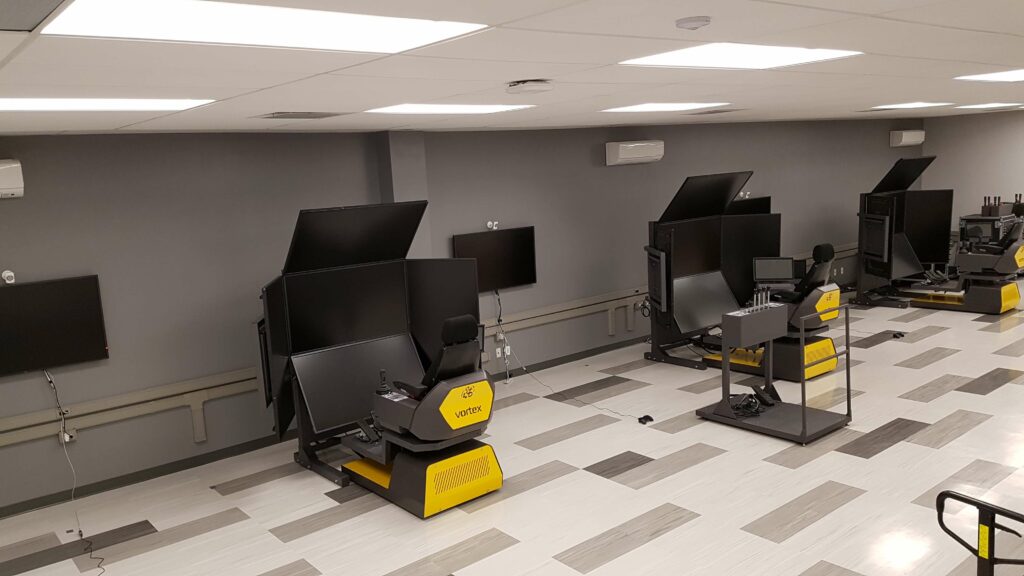When it comes to simulation-based training benefits, there are a lot to choose from. After all, simulators were originally created to make operators and work sites safer.
However, the advantages of simulation-based training go far beyond safety. That’s because today’s high-quality training solutions are also designed to replicate real machines to such a precise degree that they are virtually as versatile as the equipment they are simulating.
Let’s take a quick look at some of the top benefits.
1. Simulators increase safety
First, let’s talk about the safety benefits. Accidents are the worst-case scenario on a construction site, and simulation training makes accidents less likely to happen. That’s because simulators have been proven to improve operator safety habits, and reduce the risk of injuries, fatalities, and damage to equipment and property.
This is due to the realism of state-of-the-art simulators, which enables trainees to develop skills that are easily transferable to real equipment. Operators get a head start – at reduced risk – in developing safe, competent, and reliable work site habits.
Simulators also help organizations standardize their training by tracking, measuring, and benchmarking operator performance. Every trainee gets effective training, with no exceptions – and more importantly, they can be compared on an objective apples-to-apples basis with other operators. This is in contrast to operators who are evaluated subjectively or under different conditions – it’s hard to compare a crane trainee operating on a sunny day with another operating under overcast conditions..
2. Simulators improve productivity
Simulation-based training has also been proven to increase operator productivity by reducing the time it takes them to accomplish different objectives. Consider this case study in simulator use from Conewago Enterprises: One operator, who was already bench loading for the company, went through ten exercise sessions on the simulator. By the tenth time, he had reduced his cycle time from four and a half minutes to three minutes — saving about a minute and a half on excavator cycle time.
Shaving 90 seconds off cycle time generates approximately $39,000 worth of savings on a 30,000 cubic yard project — and $120,000 for a 100,000 cubic yard project.
This focus on productivity through a simulation-based approach can make your company more efficient and profitable.
3.Simulators protect your equipment and save you money
Simulators allow organizations to screen prospective operators or trainees to make sure they have the basic coordination and skills for the job, before they are ever put into the cab of an expensive piece of machinery.
Simulators also reduce wear and tear on equipment during training. It’s well known that novice trainees can be hard on the machinery they’re training on. With simulation-based training, your equipment lasts longer, and you are pushing back the time for expensive repairs or replacement.
4. Environmental benefits of simulator training
Then there’s the fuel savings. Equipment used for training burns fuel, but simulators don’t, which makes them far cheaper to run, and reduces CO2 emissions. In some jurisdictions, this translates directly into tax credits or other financial incentives
Using simulators also means you don’t have to take revenue-generating equipment out of service to use for training purposes — and instructors to focus on other, higher-value-added tasks, while trainees work with the simulator at their own pace. It’s a more efficient allocation of resources, and reduces the total cost of training.

5. Trainees learn faster on simulators
Trainees can learn faster on a simulator than with on-the-job training – it’s well known that trainees learn best from their mistakes, which is really only practical in a simulator. For this reason, simulators are also an ideal solution for experienced operators looking to cross-train on different equipment.
And because of simulators’ built-in scoring and tracking capabilities, any area of concern can easily be flagged for special attention from instructors. Again, with no risk of injuries or equipment damage.table.
6. Simulators are always available for training
Simulators are also available for use 24/7 every day of the year, regardless of weather or ground conditions. That can be especially helpful in colder climates, where the ground may freeze in winter. Ultimately, this means that trainees – as well as experienced operators – always have access to a resource for upskilling.
Simulators also make it possible to conduct team-based training with multiple machines, signalers and operators working together in a virtual environment. This can be expensive, difficult, and time-consuming to reproduce in real life, but is safe and easy to set up with a simulator. Plus, the ability to assess and develop communication skills in the classroom simply cannot be replicated in the field.

There are even more ways that simulators can work for you
This isn’t a complete list, but we do hope it gives you a good overview.
Simulators are designed and built with the needs of real-life operators in mind, and we welcome any questions you might have about all the benefits that simulator-based training offers.









